Maono has a wide variety of microphones, so if you’re looking for something more premium quality such as the likes of a Shure MV7, then the Maono PD400X should be something on your shortlist. The PD400X retails for US$150 and you can buy it at Amazon.
Unboxing
In the box, you’ll find the following:
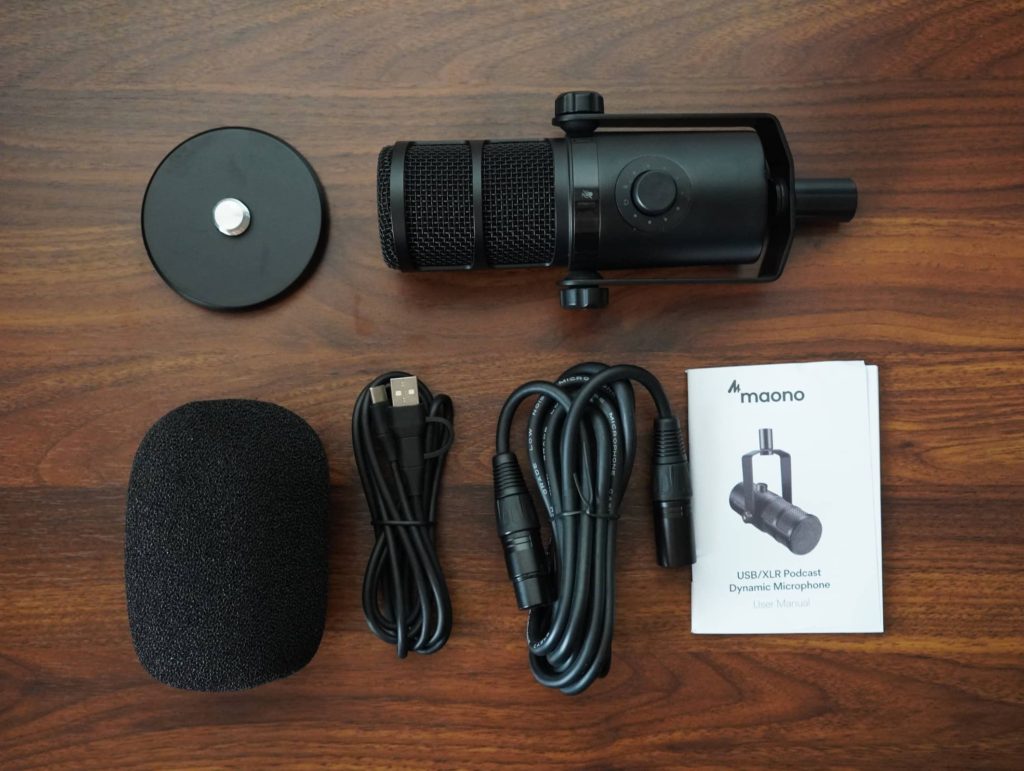
- Maono PD400X USB/XLR Dynamic Microphone
- USB-C cable
- XLR cable
- Foam windscreen
- Microphone stand
- User manual
Build quality and design
The moment I held the Maono PD400X in my hands, I could tell this is a premium product. The microphone features an all metal body, and feels weighty with quite some heft to it. The PD400X is accompanied by a stand which is also made from metal and has a good weight to it. It would be been nice to see a shock mount included as well.
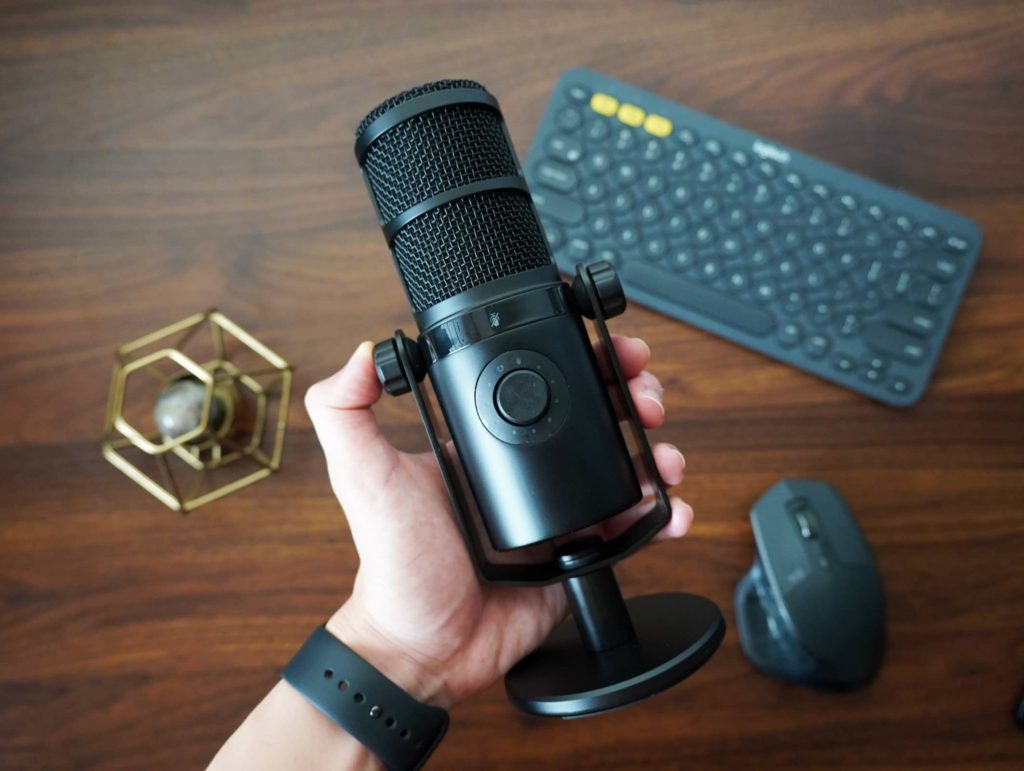
The height of the microphone stand is quite low especially if you are looking to do more serious vocal work. If you want for flexibility in the position of the microphone you can mount the Maono PD400X on any boom arm as long it has a 3/8″ or 5/8″ screw thread. In particular, you can consider the Maono BA91 boom arm which retails retails for US$80.
Maono BA91 boom arm
The BA91 is an adjustable scissor arm bracket is made from steel, in a black colour. The PD400X mounts on easily via the screw thread on the boom arm. The BA91 boom arm supports up to 1.8kg of weight.
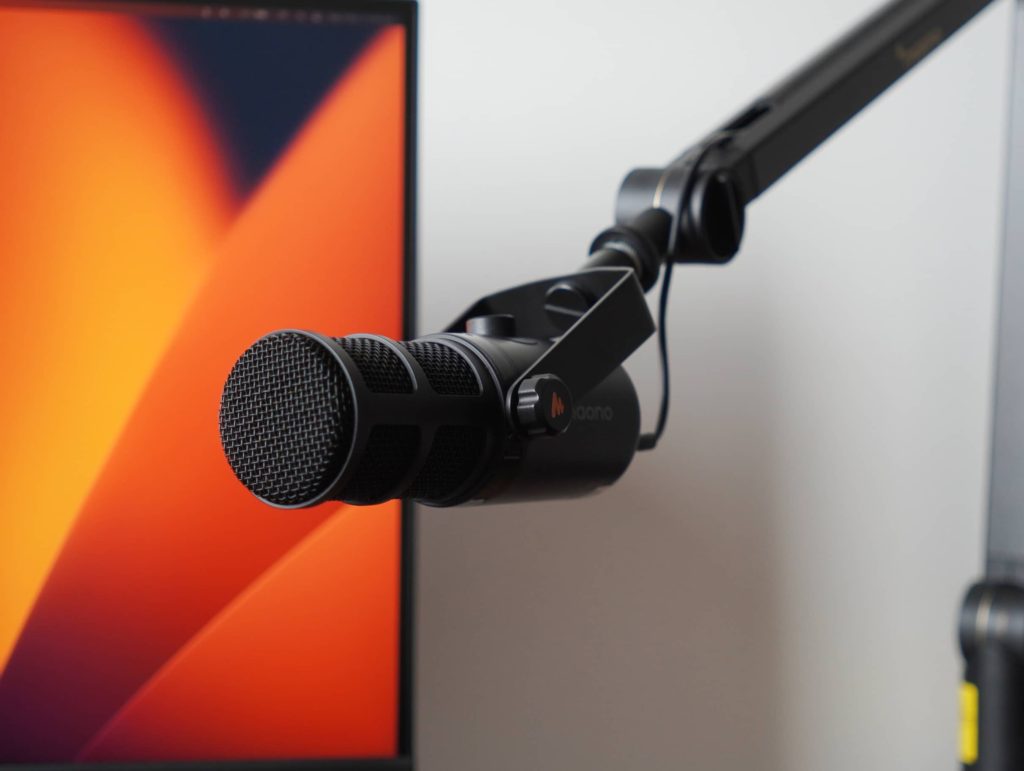
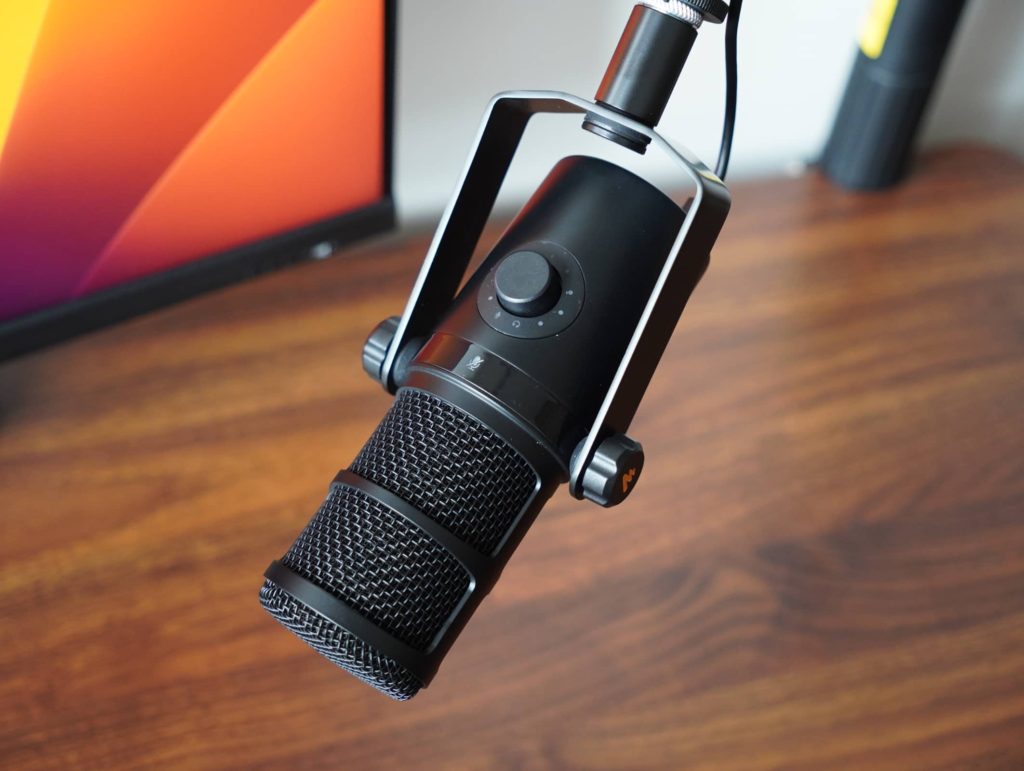
The clamp that mounts on the desk is padded, and is expandable up to 2.4 inches. To tighten or loosen the clamp, you can simply twist the clamp which has thoughtful grooves to make it easy to turn. I like the way this is design as you don’t have to go under the desk to twist the clamp which traditional arms have. The clamp is also able to rotate 360º so you more flexibility on placements.
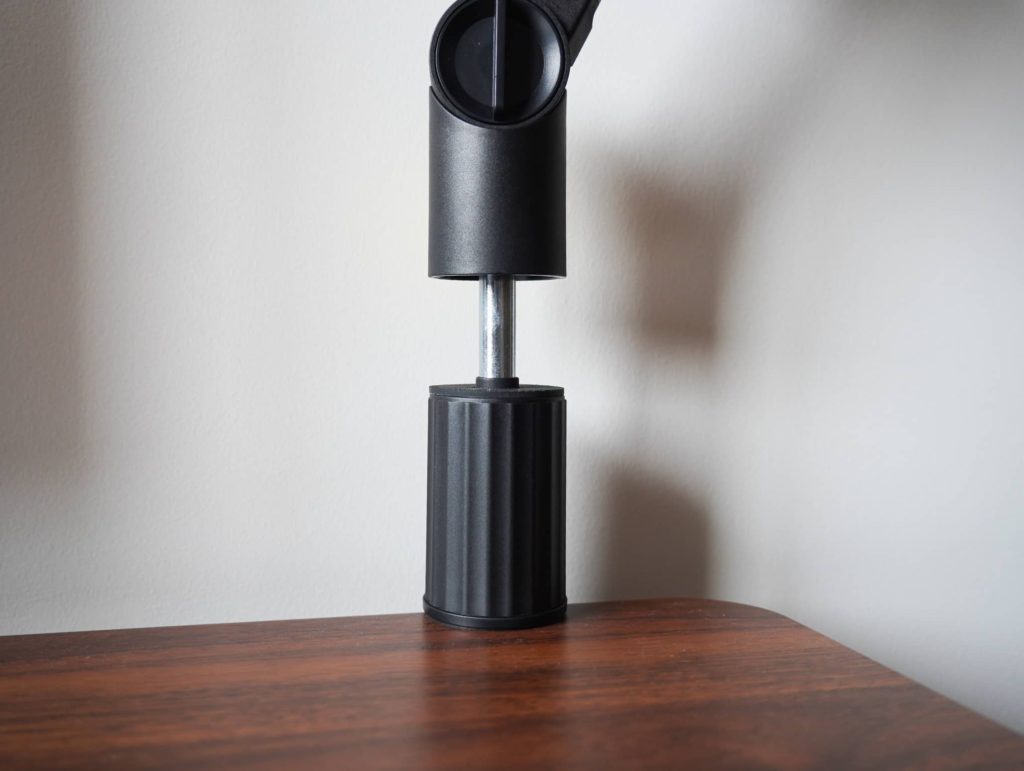
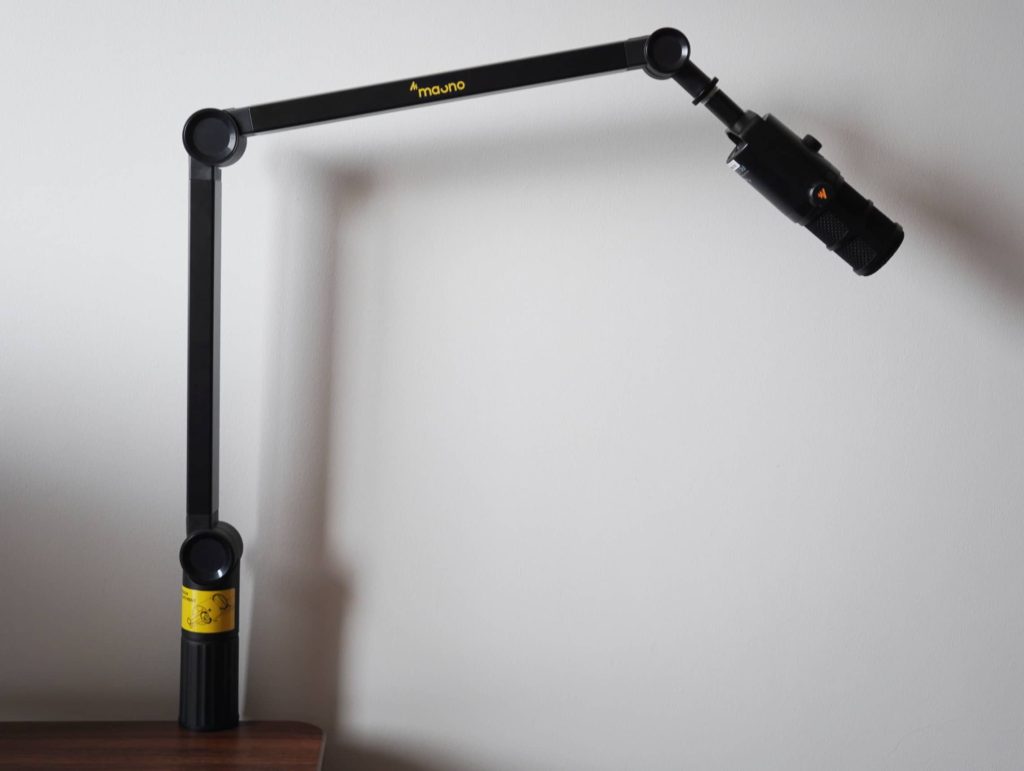
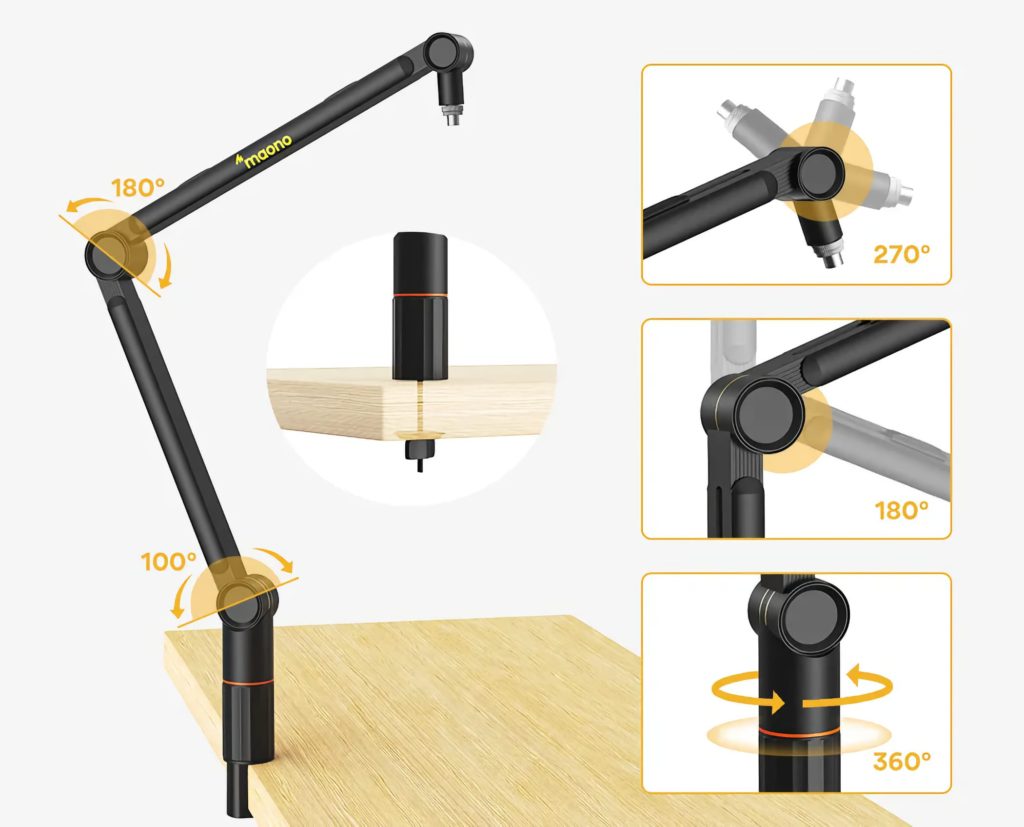
The vertical arm is 40cm long with 100º of rotation adjustments while horizontal arm is 35cm long with 180º of rotation adjustments. The microphone ball head has 270º of adjustment. Another thoughtful feature of the BA91 boom arm is the built-in wire channel which has a rubber sleeve to hide the wires cleanly insider it. This keeps the entire microphone setup clean and tangle free.
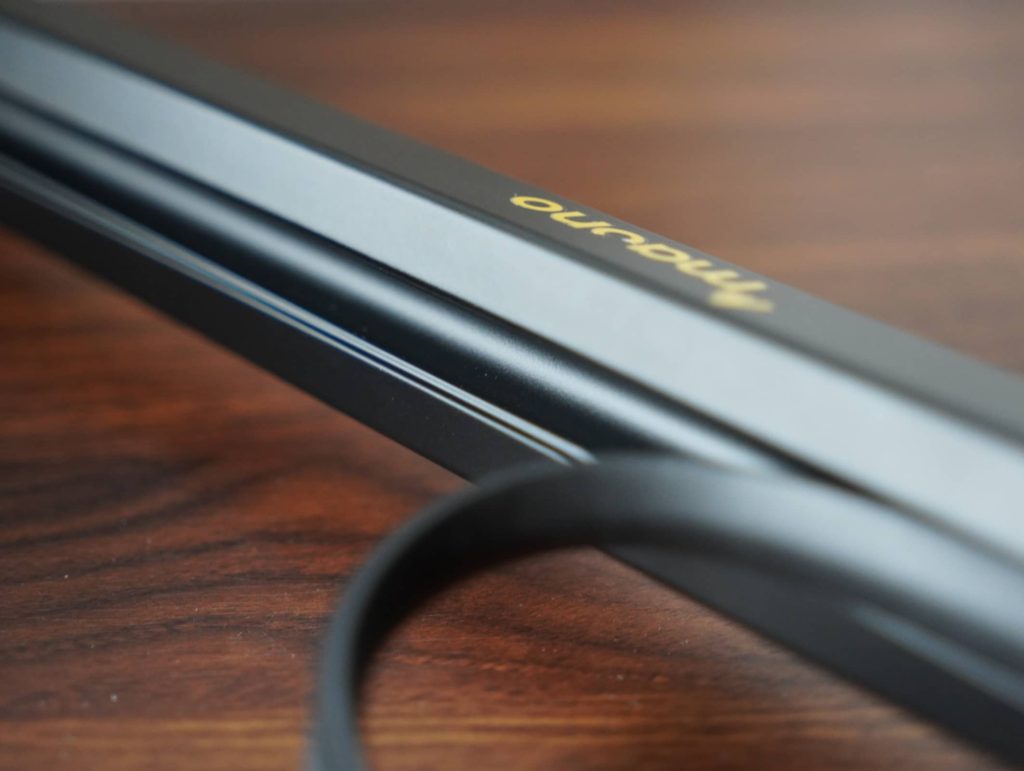
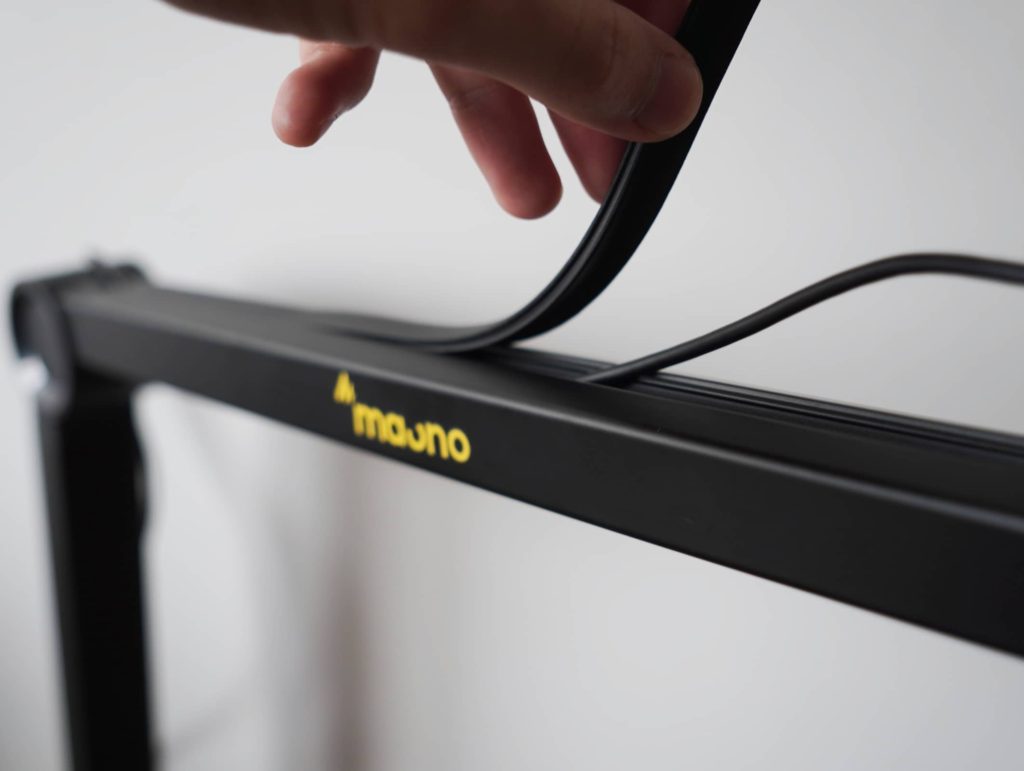
The overall experience of using the BA91 boom arm is great. The build quality is solid, and the joint are smooth and making adjustments.
Controls and connectivity
For controls, there are three main onboard buttons on the Maono PD400X. First, you have a 3-in-1 digital knob which allows you to cycle through the adjustment of three settings below by clicking into it.
- Microphone gain
- Monitoring output volume
- Monitoring output mix volume
The mic monitoring is done via the 3.5mm AUX input located at the bottom of the microphone. This is handy feature as you do not need an audio interface to listen to how your voice sounds if you using the Maono PD400X purely from a USB input.
There are LED indicators in the form of a dotted circle along the 3-in-1 knob to let know the amount of gain/volume that you are at. Second, the microphone symbol in the middle of the Maono PD400X is a touch-sensitive mute switch. Tapping it mutes and unmutes the microphone, which I found to be reactive during my time of testing. The microphone logo changes to a red LED light to indicate its mute status
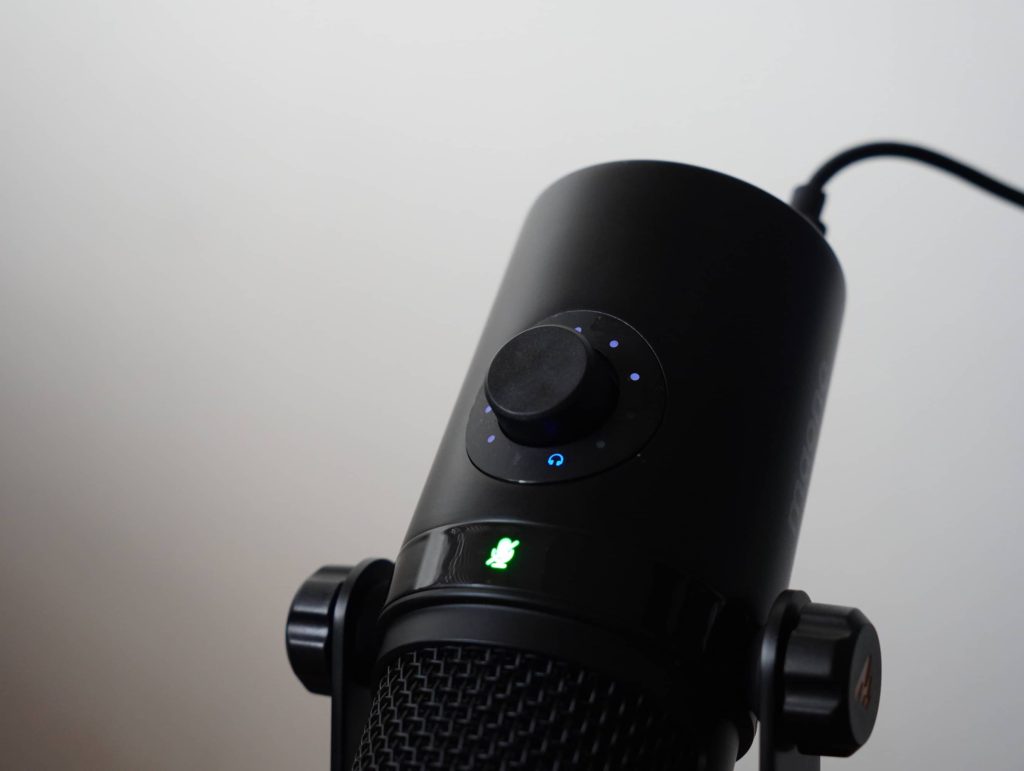
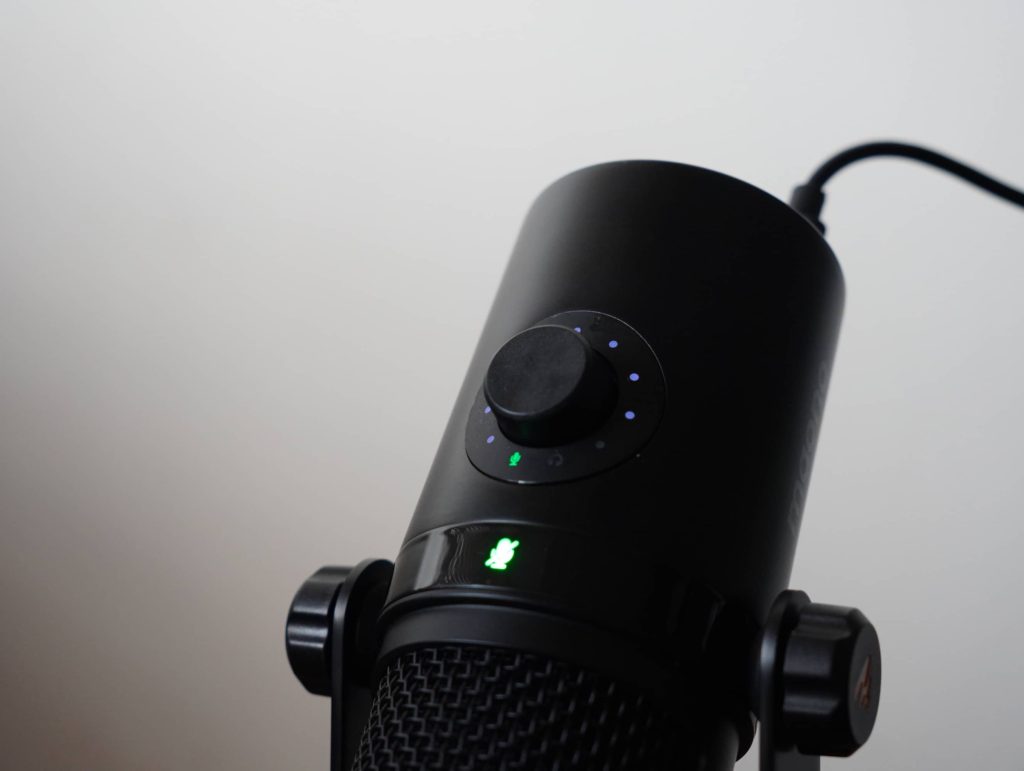
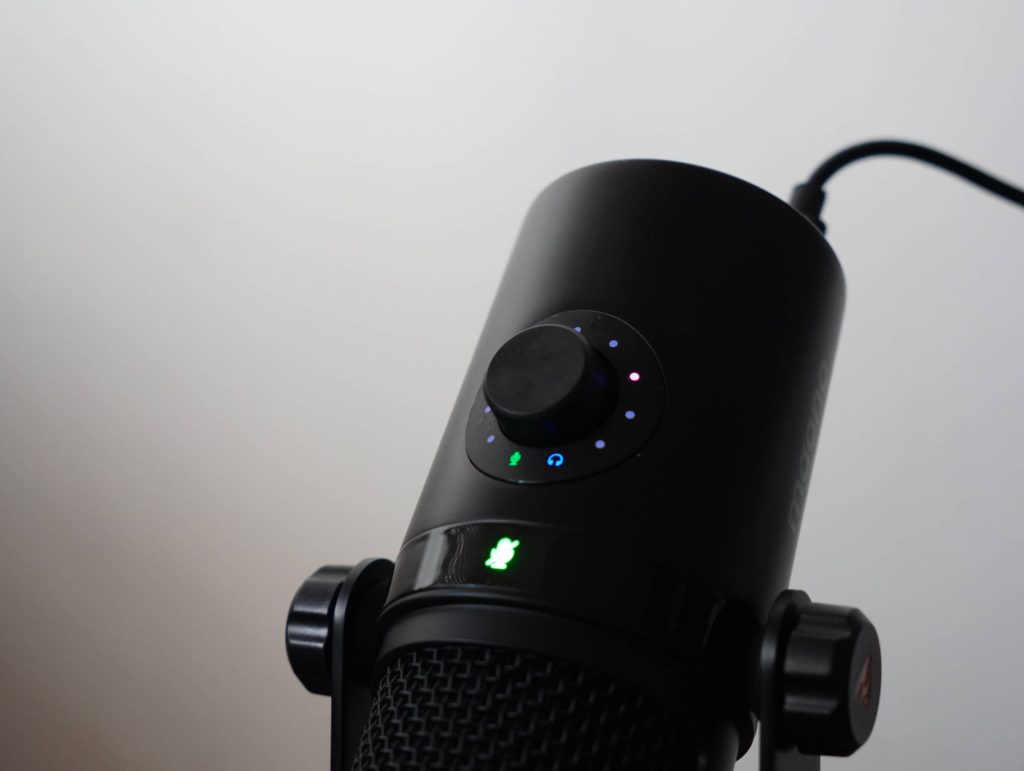
Lastly, you have a tiny button located on the bottom of the Maono PD400X which allows you to toggle between four EQ presets, which has respective LED indicators above.
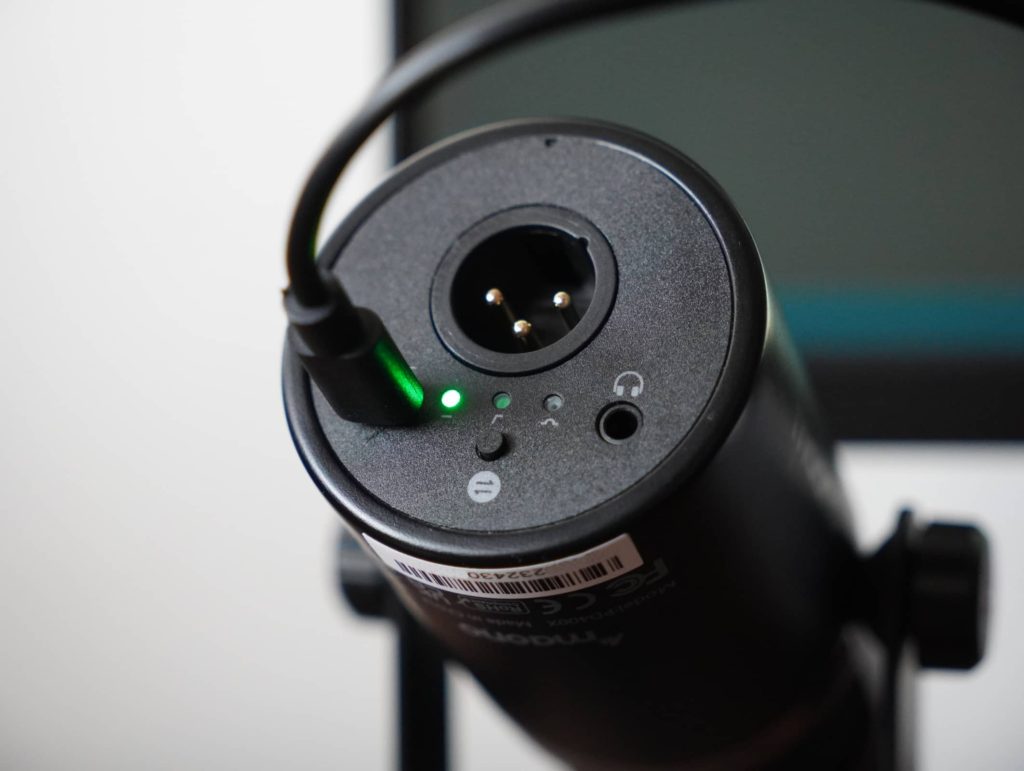
- Flat
- High-pass filter (HPF)
- Presence Boost
- HPF + Presence Boost
The main highlight of the Maono PD400X is its support for both USB and XLR inputs. This makes a versatile microphone as you can still use it via USB, and then switch to XLR when you get an audio interface or mixer. Being a USB microphone means that you can even connect it to your smartphone.
Recording performance
I’m using the microphone with the USB mode of connectivity. The Maono PD400X has a cardioid polar pattern so you have to speak right at the top of the microphone capsule for best voice capture. The Maono PD400X works with both Windows and macOS.
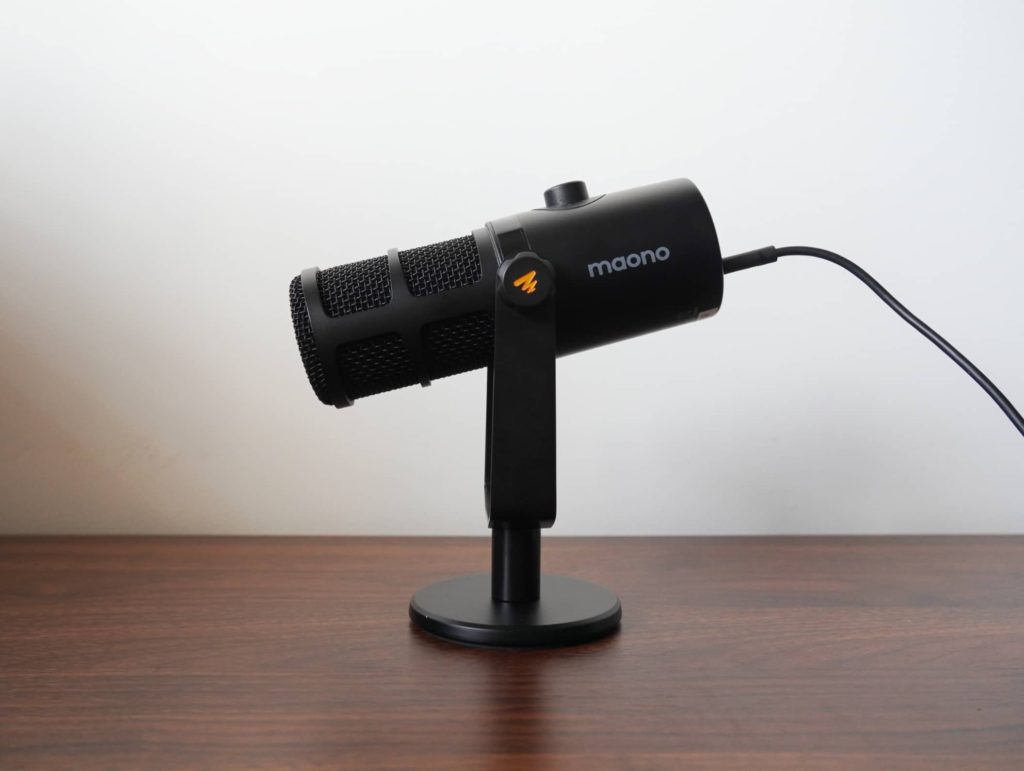
The recording performance of the Maono PD400X is really good for its price. My voice sounds crisp and clear, with a natural warm tonality to it. It has broadcast/podcast-like sound where my voice is forward and rich. There is a good amount of bass to give it depth while retaining midrange detail. With my keyboard right in front of the Maono PD400X, the microphone does pickup some keyboard and mouse clicks but they remain distant.
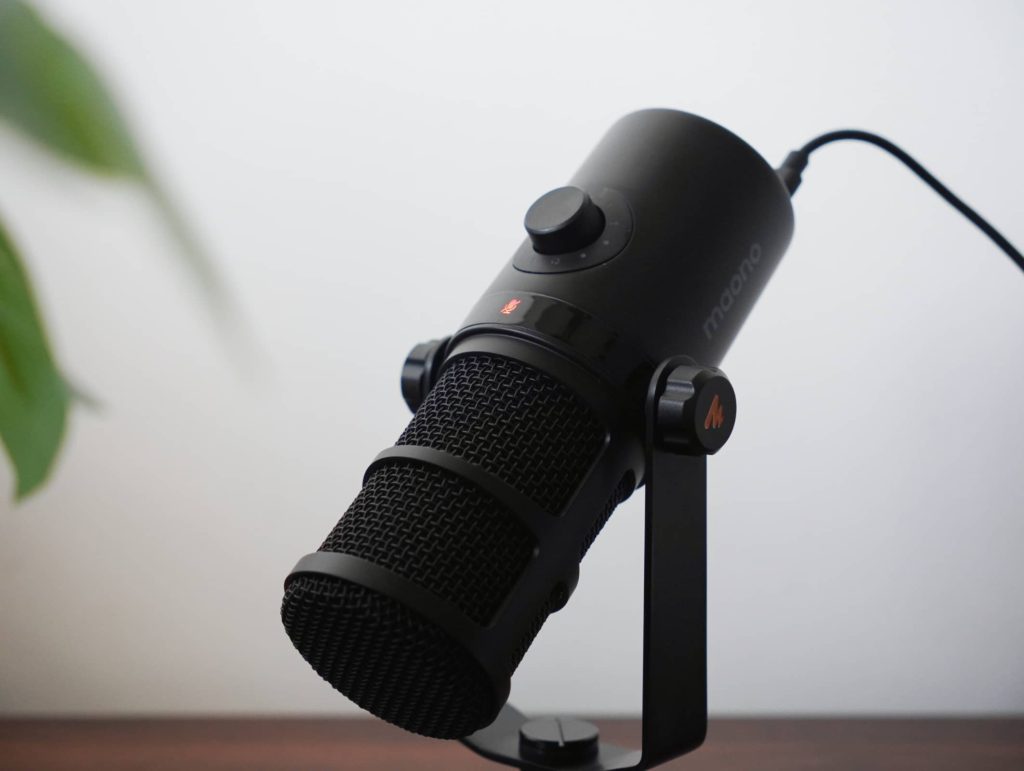
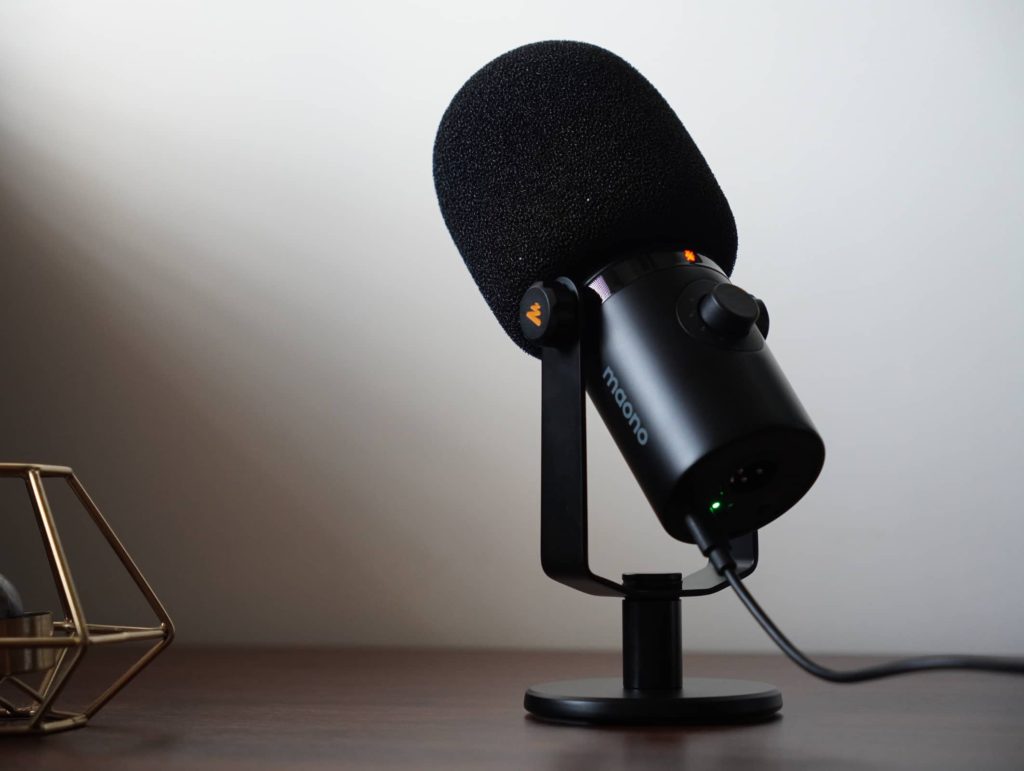
Without adding the foam windscreen, plosive words and pops are caught quite noticeably in the recording. I’d recommend putting on the foam windscreen if you are using it at close distance for any vocal recording as it really softens out any of the pops.
User experience and features
The included microphone stand is prone to vibrations from the desk or surface that it is on. If you are looking to get the Maono PD400X for keyboard sound test, I’d recommend getting a boom arm for this if not you’re going to be capturing a ton of spacebar thuds.
Another thing to note is that the controls will more often that not be upside down when you are using the microphone. Because of this, you cannot see the settings you make on the microphone without tilting it down. And when you tilt the microphone back up, you might accidentally mute the microphone since it is a touch sensitive input.
Maono Link app
The Maono PD400X is supported by the Maono Link software which lets you make changes to the microphone without having to fiddle which any of the buttons on the microphone itself. The app greets with you two options of views – (1) Standard, or (2) Advanced.
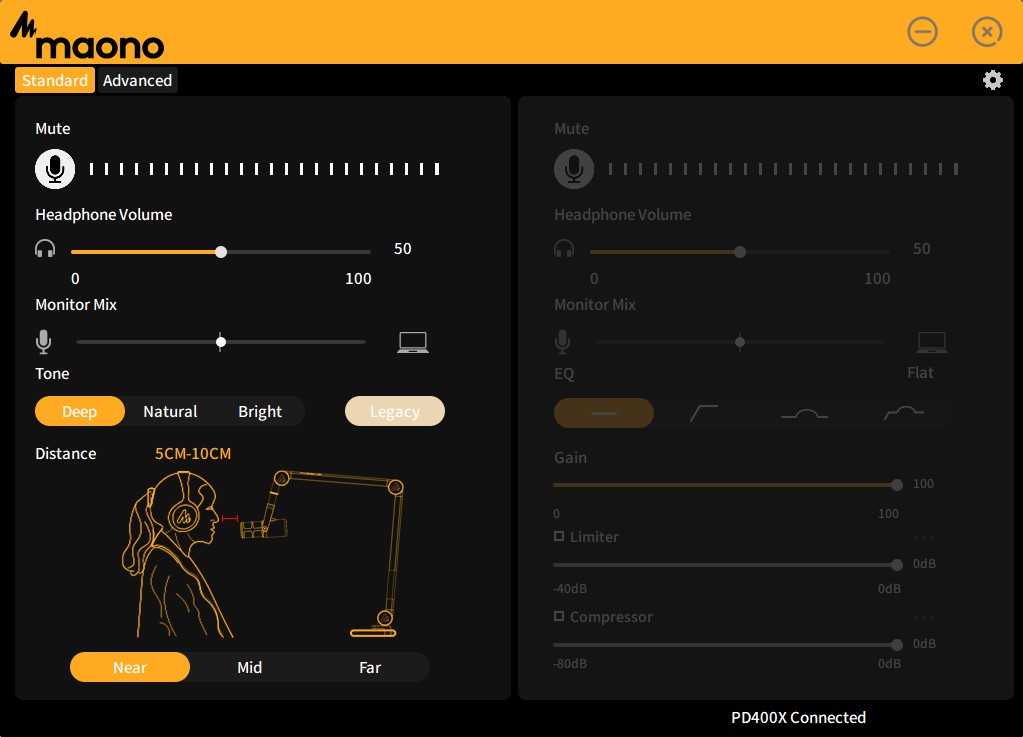
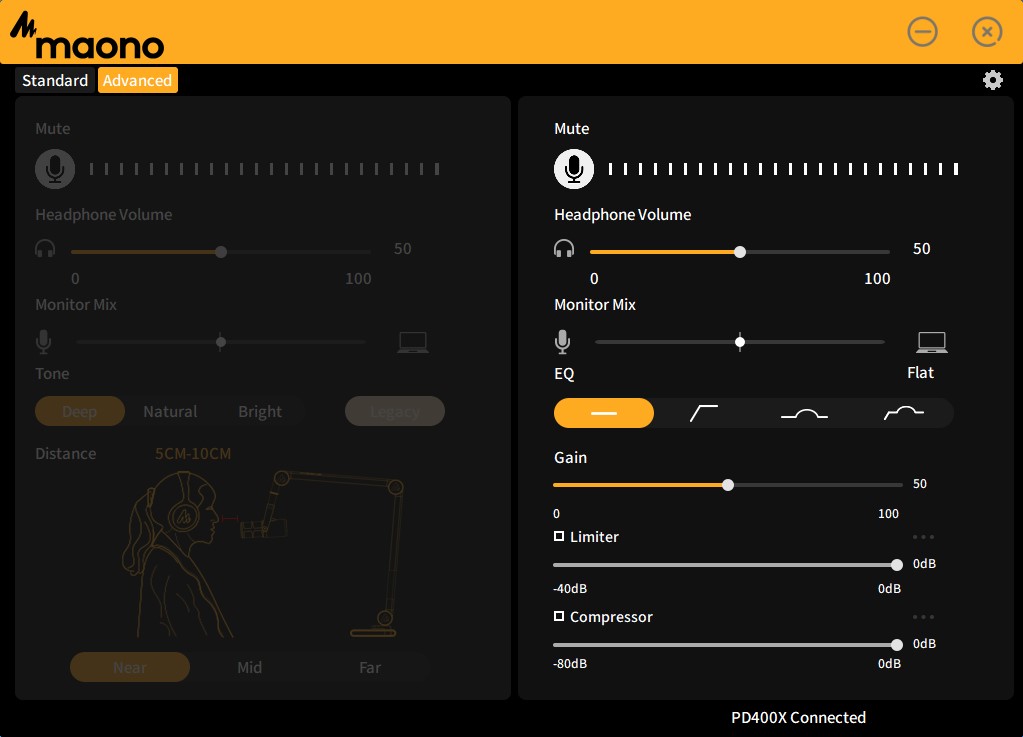
If you’re new to recording, the ‘Standard’ view would probably be better as you can simply choose the tone you’re looking for without understanding that each EQ preset tries to achieve. You also get easy to choose “distance from microphone” option which automatically sets the mic gain based of that.
Conclusion
The Maono PD400X is a microphone that grows with you. For first-timers, you can simply connect it via USB and get quality level recordings for your streams or calls. The Maono Link lets you learn some tweaks here and there with the ‘Advanced’ settings. Once you get more advanced you can switch to using the Maono PD400X via XLR input into an audio mixer. The quality of recordings is superb and at its US$150 price point, it really presents a great value compared to other USB/XLR microphones on the market.

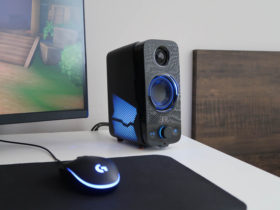
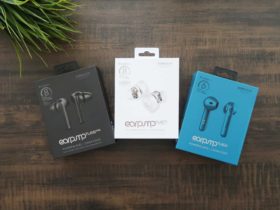
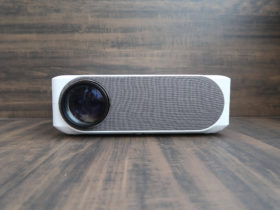










Leave a Reply